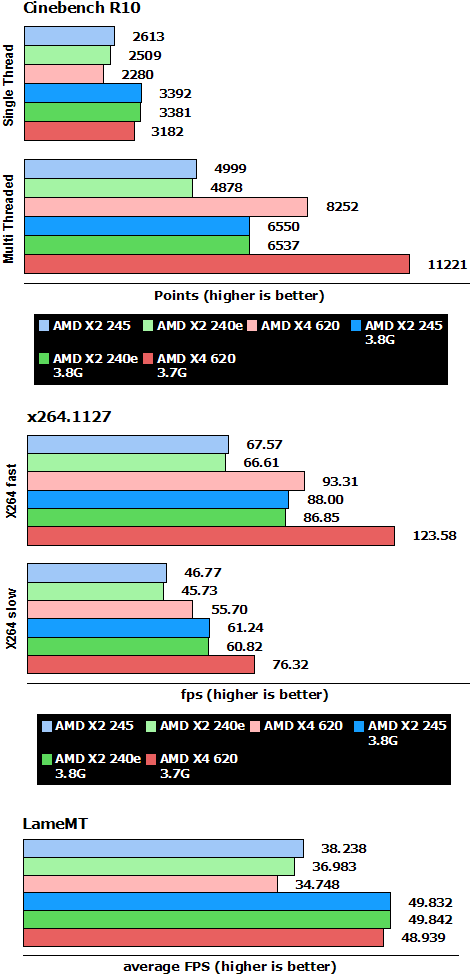Index


Review: Energy efficiency for the masses?
This review is also available in German.
Since about three months ago, AMD is selling energy efficient versions of the heavily delayed AMD Propus die. The core has lost its massive L3 cache, but AMD decided to increase the L2 Cache to 1MB per core. All cores features 64kB L1 cache for data and instructions. The normal Propus CPUs have a 65W TDP rating, while the energy efficient CPUs have a rating of 45W. The 245 runs at 2.90GHz, while the 240 has to manage with 2.80GHz.
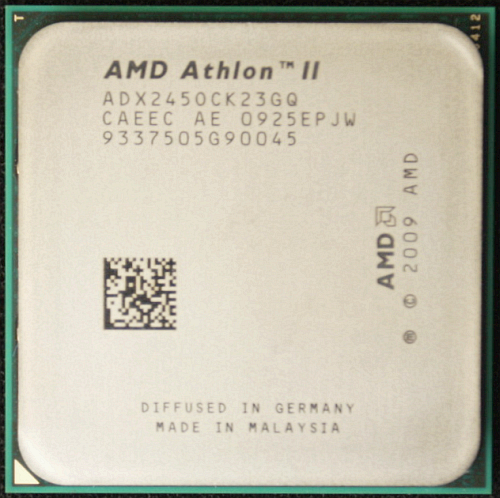
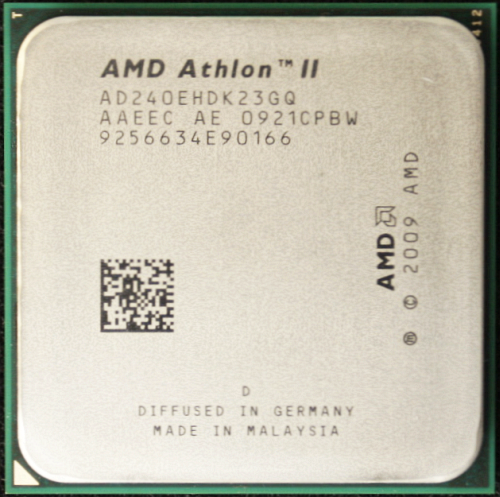
It's time to check if the reduced CPU VCores do have an impact on power-consumption, because energy efficient CPUs come with a price premium. For some reason, the Athlon II X2 CPUs are only specified with 1067MHz but do overclock quite well up to 1600MHz. However, we test everything according to the official specification.
Testbed:
Motherboard:
MSI 790GX-GD70 (provided by MSI)
AMD 790GX/SB750
CPU-Cooler:
Scythe Kama Angle (provided by Scythe-Europe)
Memory:
G.Skill 4GB Kit PC3-12800 (provided by G.Skill)
1067MHz CL7-7-7-21 CR1T 1.30V for Athlon II X2
1333MHz CL7-7-7-21 CR1T 1.30V for Athlon II X4
Graphics Card:
MSI R4850-2D1G-OC (provided by MSI)
Power supply:
PC Power & Cooling Silencer 500W (provided by PC Power & Cooling)
Hard disk:
Samsung F1 1000GB RAID-Edition (provided by Ditech)
Case fans:
SilenX iXtrema Pro 14dB(A) (provided by PC-Cooling.at)
Scythe DFS122512LS
Case:
Cooler Master Stacker 831 Lite (provided by Cooler Master)
OS:
All tests are performed with XP SP3. As 64-bit software is still not very common, we stick with the 32-bit version. We will change to Windows 7 when we swap the graphics card for a DX11 capable one.
Overview:
As usual AMD CPUs have an ridiculously high VCore. Why a dual-core CPU needs 1.4250V is beyond our understanding. The so called energy efficient CPUs have a reduced VCore of 1.2500V. Also in idle the voltages are quite high. We don't like that at all. As the numbers indicate the 245 is clocked 100MHz faster as a 240e.
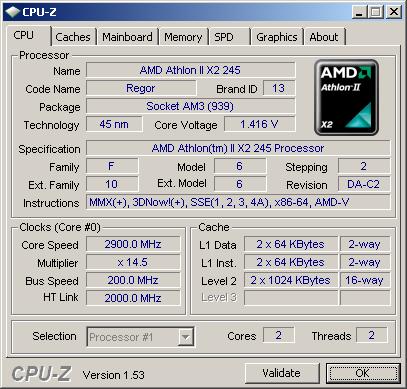
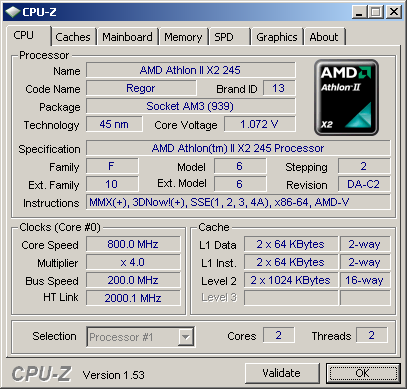

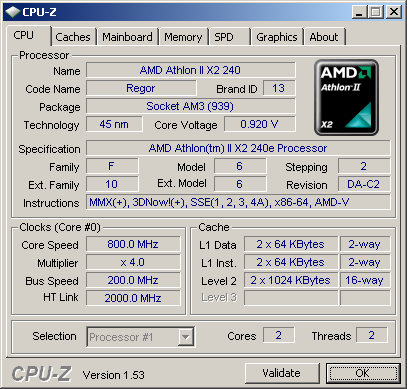
Under-Voltaging:
So it's on you to reduce the energy-consumption further by decreasing the VCore on your board. Not all boards do support this feature, so make sure your board supports it.
The Athlon II 245 went down from 1.4250V to 1.1500V.
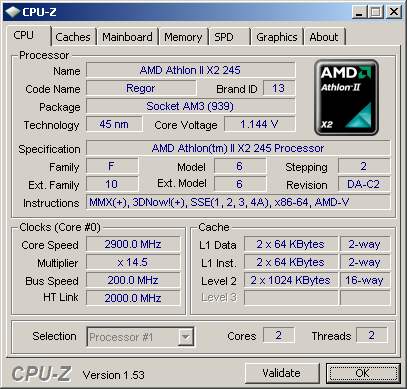

Of course we run stability test with Prime95:
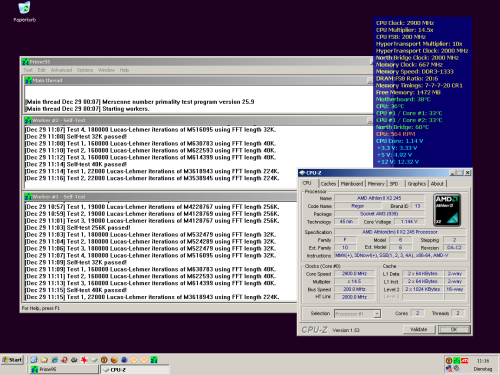
The Athlon II 240e went down from 1.2500V to 1.0500V. Not that much, but still impressive.
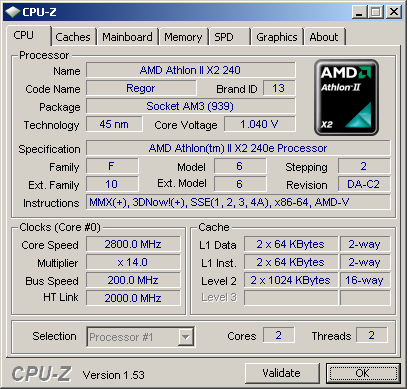
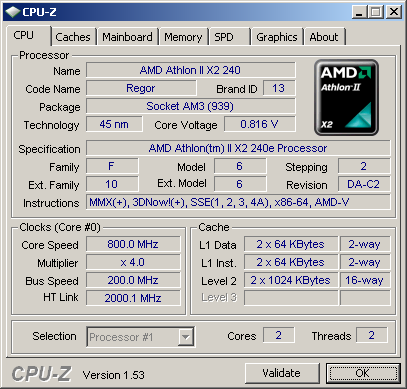
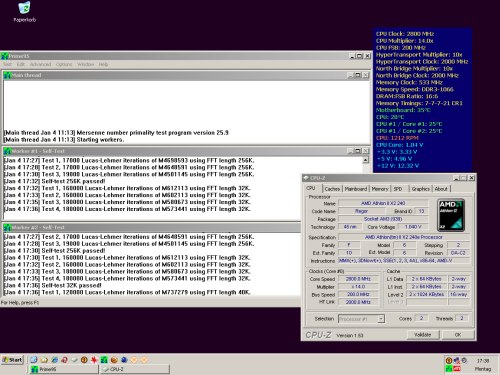
Overclocking:
As expected, the CPUs ran stable up to about 3.85GHz on air-cooling. We settled with both CPUs at 3.80GHz. While the 245 did need 1.6000VCore for stable operation, the 240e was able to do so at 1.4300V. Because bootup-voltage is limited to the nominal VCore, some boards are limited in terms of overclocking. Some boards, such as the MSI, offer lower frequencies during bootup to ensure higher overclockability. Regardless of voltage 3.9GHz did boot up, but was not stable. MSI boards also supports Cool and Quiet with higher FSBs, not all boards can do that, so make sure, your board does to reduce power-consumption when overclocked.
Athlon II X2 245:
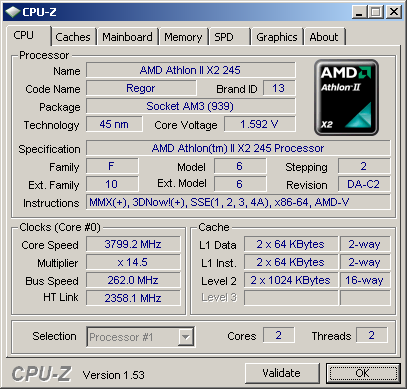
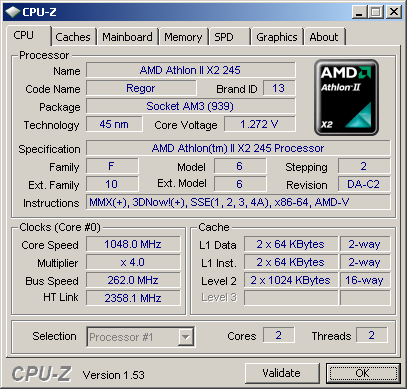
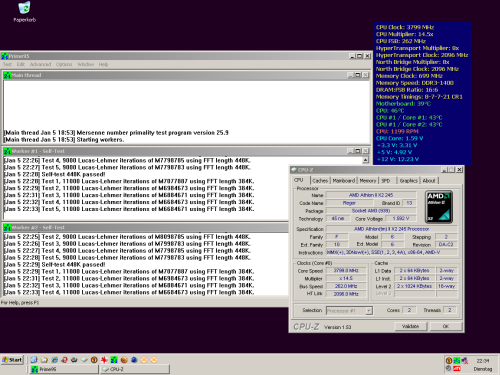
The Athlon II X2 240e is a bit harder to overclock, because it needs a higher virtual FSB due to the lower CPU-multiplier, but the CPU did not disappoint:
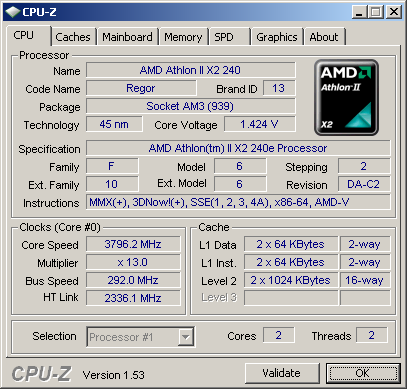
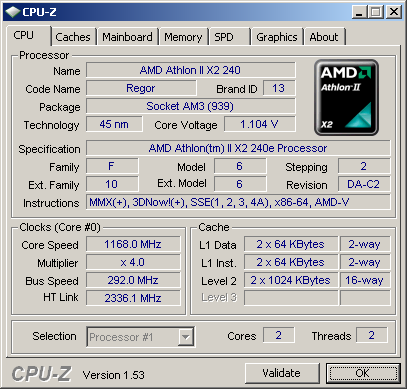
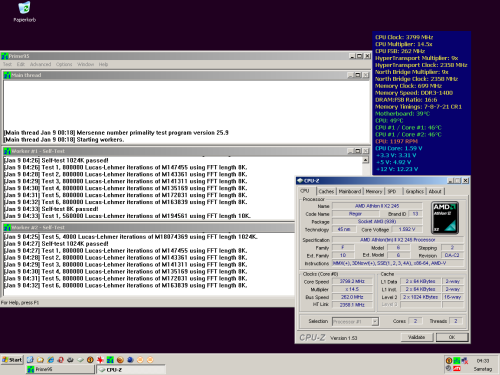
While the AMD Athlon II X2 245 has a TDP of 65W, the Athlon II X4 with its TDP of 95W is trailing it closely. Under full load the difference between 45W and 65W TDP CPUs is minimal. As you can see with a reduced VCore the efficiency of the CPU goes up significantly, but is still no match to any Intel CPU.
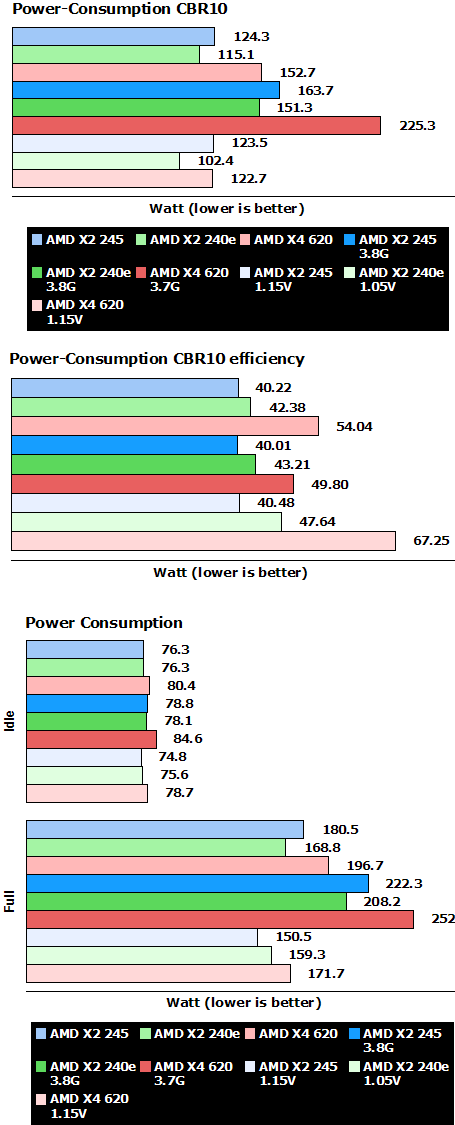
Before we can think of a conclusion we need to check the system costs and performance. While 100MHz do not count for much, it's clear a quad-core is superior, especially in games. The Athlon II X4 620 still outperforms any dual-core even when clocked 300MHz slower. Even when the dual-cores are overclocked to 3.80GHz, the cheapest AMD quad-core can still hold its ground and considering the power-consumption it offers far superior performance. For our system we choose the MSI 785GM-E65 board, the cheapest 4GB Kit for 1333MHz CL7 we could find and the cheapest HD4850 1GB which will result in a decent system.
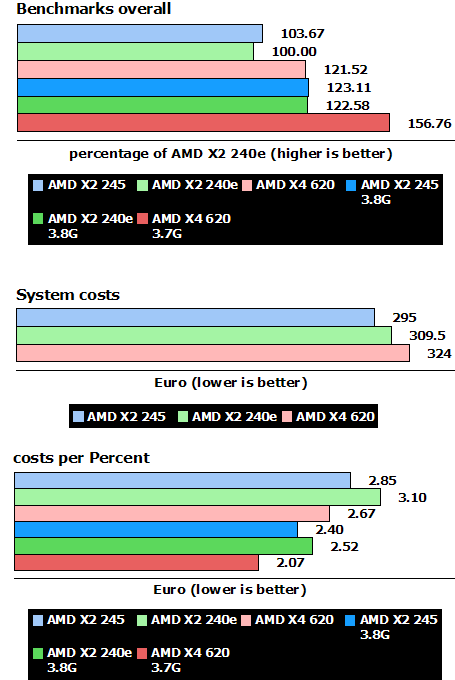
Conclusion:
Considering AMD's pricing for these CPUs, we must say that they perform rather well. However, energy efficient CPUs do cost about 30% more than regular versions. When you have a very cheap board which does not support any form of under-voltaging then this is the CPU to go. If you are gamer, we suggest you get a quad-core. Most games which come from the X-Box 360 and are ported to the PC-platform do support three cores, so an X3 435 for about €62,- is a better option. The downside on the three cores is the quite high power-consumption compared to any real X4. Of course some boards can unlock the fourth core, but you can never be sure it will work.
As long as you are a casual gamer, mostly surf the interweb, watch videos a dual-core is really not a bad choice. The Athlon II 245 is currently available just shy of €50,-, while the 240e costs about €64,-. Meanwhile, the Athlon II X4 620 dropped in price to about €77,- which is not bad either.
AMD has much work ahead. We think AMD could lower the TDP of all its CPUs by decreasing the VCore. As our under-voltaging tests prove there is quite a lot of headroom. The energy-efficient CPUs can go even lower as we have proven in our tests. We were impressed with the overclockability of the 240e, which also managed 3.80GHz but at a much lower VCore compared to the 245. From a price/performance point of view the Athlon II X4 620 is superior to any dual-core CPU and we still recommend it.
As always here are all the benches we performed.
You can see the quad-core still outperforms any dual-core even when clocked much slower. Even the overclocked CPUs can barely outpace the slowest quad-core when more than two cores can be used.
